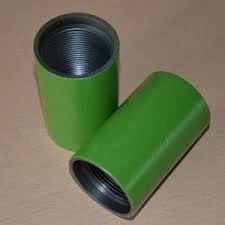- Afrikaans
- Albanian
- Amharic
- Arabic
- Armenian
- Azerbaijani
- Basque
- Belarusian
- Bengali
- Bosnian
- Bulgarian
- Catalan
- Cebuano
- Corsican
- Croatian
- Czech
- Danish
- Dutch
- English
- Esperanto
- Estonian
- Finnish
- French
- Frisian
- Galician
- Georgian
- German
- Greek
- Gujarati
- Haitian Creole
- hausa
- hawaiian
- Hebrew
- Hindi
- Miao
- Hungarian
- Icelandic
- igbo
- Indonesian
- irish
- Italian
- Japanese
- Javanese
- Kannada
- kazakh
- Khmer
- Rwandese
- Korean
- Kurdish
- Kyrgyz
- Lao
- Latin
- Latvian
- Lithuanian
- Luxembourgish
- Macedonian
- Malgashi
- Malay
- Malayalam
- Maltese
- Maori
- Marathi
- Mongolian
- Myanmar
- Nepali
- Norwegian
- Norwegian
- Occitan
- Pashto
- Persian
- Polish
- Portuguese
- Punjabi
- Romanian
- Russian
- Samoan
- Scottish Gaelic
- Serbian
- Sesotho
- Shona
- Sindhi
- Sinhala
- Slovak
- Slovenian
- Somali
- Spanish
- Sundanese
- Swahili
- Swedish
- Tagalog
- Tajik
- Tamil
- Tatar
- Telugu
- Thai
- Turkish
- Turkmen
- Ukrainian
- Urdu
- Uighur
- Uzbek
- Vietnamese
- Welsh
- Bantu
- Yiddish
- Yoruba
- Zulu
Bull Plug Pipe Configuration and Layout Design for Optimal Performance
Understanding Bull Plug Pipe Layout in Industrial Applications
In industrial piping systems, the arrangement and configuration of pipes are crucial for ensuring efficiency and safety. One important component in various pipe layouts is the bull plug. This article will explore the bull plug pipe layout, its significance, applications, and best practices for installation and maintenance.
What is a Bull Plug?
A bull plug is a type of fitting used to seal the end of a pipe, preventing the flow of fluids and ensuring the integrity of the system. Typically made from materials like steel, brass, or plastic, bull plugs come in various sizes and pressure ratings, making them versatile for multiple applications. They are often used in conjunction with other fittings, valves, and connectors to create a comprehensive piping system.
Importance of Bull Plug Pipe Layout
The bull plug pipe layout plays a crucial role in the overall design of a piping system. Properly designed layouts ensure that fluid dynamics are optimized, preventing issues such as turbulence, pressure loss, and leakage. Additionally, a well-executed layout facilitates maintenance and repair processes, allowing for easier access to components when needed.
In many industrial settings, the bull plug serves not only as a closure but also as a point of access for testing and maintenance. By integrating bull plugs into the pipe layout, operators can easily inspect pressure levels and fluid flow without disassembling extensive sections of the piping.
Applications of Bull Plug Pipe Layout
Bull plugs are commonly found in various industries, including
2. Water Treatment Bull plugs play a critical role in water treatment facilities, where they help manage flow paths and facilitate maintenance without disrupting the entire system.
bull plug pipe layout

3. Chemical Processing In chemical plants, the need for high-pressure systems requires robust sealing solutions, making bull plugs ideal for isolating specific sections of pipe.
4. HVAC Systems In heating, ventilation, and air conditioning systems, bull plugs can help in isolating areas for repairs during scheduled maintenance without affecting other parts of the system.
Best Practices for Bull Plug Pipe Layout
To ensure the effectiveness and longevity of a bull plug pipe layout, several best practices should be followed
1. Proper Sizing Select the right size bull plug for the pipe diameter. An incorrect fit can lead to leaks or failures, compromising system integrity.
2. Regular Inspection Conduct routine inspections of bull plugs and surrounding areas. Look for signs of wear, corrosion, or leaks, and address any issues immediately.
3. Use of Sealants In high-pressure applications, consider using thread sealants or Teflon tape to enhance the sealing capability of bull plugs.
4. Follow Manufacturer Guidelines Always adhere to manufacturer recommendations for installation and maintenance to ensure optimal performance and safety.
5. Training Personnel Ensure that personnel responsible for installation and maintenance are adequately trained. Understanding the purpose and proper handling of bull plugs can prevent costly mistakes.
Conclusion
The bull plug pipe layout is an essential aspect of industrial piping systems, ensuring efficiency, safety, and ease of maintenance. By understanding the importance, applications, and best practices related to bull plugs, engineers and operators can better design and manage their piping infrastructure. As industries continue to evolve, the correct implementation of bull plug layouts will remain crucial for maintaining operational excellence.
-
Tubing Pup Joints: Essential Components for Oil and Gas OperationsNewsJul.10,2025
-
Pup Joints: Essential Components for Reliable Drilling OperationsNewsJul.10,2025
-
Pipe Couplings: Connecting Your World EfficientlyNewsJul.10,2025
-
Mastering Oilfield Operations with Quality Tubing and CasingNewsJul.10,2025
-
High-Quality Casing Couplings for Every NeedNewsJul.10,2025
-
Boost Your Drilling Efficiency with Premium Crossover Tools & Seating NipplesNewsJul.10,2025







